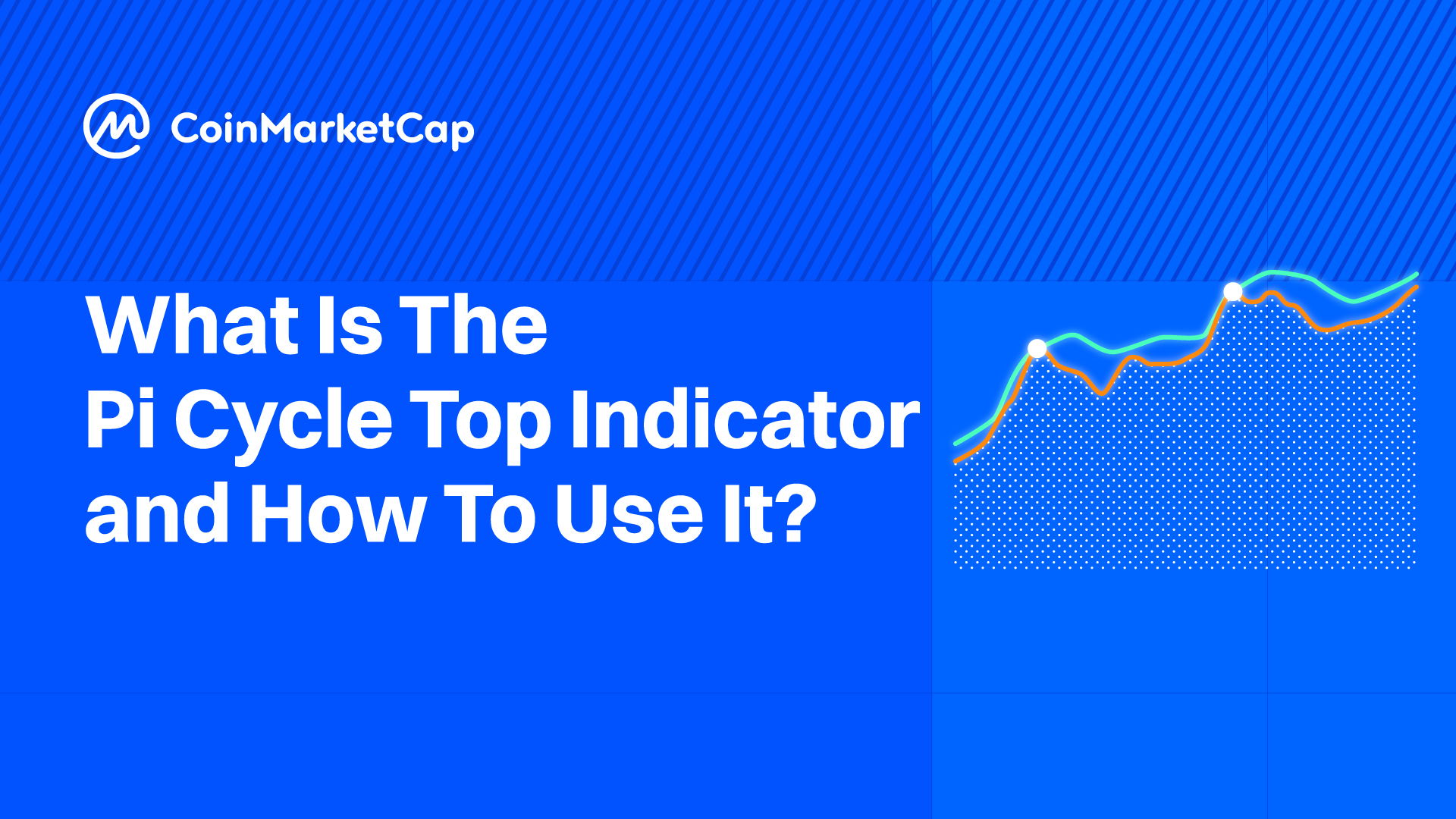CoinMarketCap Academy membahas Indikator Pi Cycle Top, sebuah indikator trading sederhana yang tampaknya telah memprediksi puncak siklus bull sebelumnya.
Bitcoin baru saja mencapai rekor tertinggi sepanjang masa, portofoliomu tampak gemuk, dan media sosial dibanjiri dengan emoji mata laser dan roket. Tapi bagaimana jika sebuah persilangan rata-rata bergerak sederhana bisa memberi tahu kamu bahwa keadaan akan segera memburuk — hanya dalam waktu tiga hari?
Apa Sebenarnya Garis Ajaib Ini?
Indikator Pi Cycle Top sangatlah sederhana — mungkin justru karena itulah ia bekerja dengan begitu baik. Diciptakan oleh Philip Swift (otak di balik LookIntoBitcoin), indikator ini hanya menggabungkan dua moving average untuk mendeteksi kapan reli Bitcoin akan segera berakhir.
Begini pengaturannya: Ambil rata-rata pergerakan (moving average) 111 hari Bitcoin dan tunggu hingga garis itu melintasi ke atas moving average 350 hari yang dikalikan 2. Ketika itu terjadi — secara historis — saatnya untuk keluar dari pasar.
Matematika di Balik Keajaiban
Pi Cycle Top hanya menggunakan dua komponen sederhana:
- Garis Cepat: Moving average 111 hari Bitcoin (lebih responsif terhadap perubahan harga)
- Garis Lambat: Moving average 350 hari Bitcoin yang dikalikan 2 (bergerak sangat lambat, tapi memberi stabilitas)
Dalam kondisi pasar normal, garis lambat ini biasanya berada jauh di atas garis cepat. Tapi saat Bitcoin benar-benar menggila dalam fase bull run, garis cepat akhirnya menyusul dan menyeberang ke atas. Persilangan itu? Itulah sinyalmu.
Fakta Menarik: Kalau kamu membagi 350 dengan 111, hasilnya adalah 3,153 – sangat dekat dengan π (3,142). Maka dari itu dinamakan “Pi Cycle.” Kebetulan? Mungkin. Keren? Jelas banget.
Rekam Jejaknya
Nah, di sinilah segalanya jadi menarik. Indikator Pi Cycle Top telah berhasil memprediksi puncak-puncak siklus besar Bitcoin dengan ketepatan yang nyaris supranatural. Kita bicara soal memprediksi puncak hanya dalam hitungan hari — bukan minggu atau bulan.
Tapi ada twist dalam ceritanya. Philip Swift baru mempublikasikan indikator ini pada April 2019, yang berarti ia melihat ke belakang ke sejarah Bitcoin dan menemukan pola ini.
Meski begitu, setelah dipublikasikan, indikator ini terus memberikan sinyal yang sejalan dengan koreksi besar pasar.
Cara Sebenarnya Menggunakan Alat Ini
Yang perlu diperhatikan:
- Amati saat MA 111 hari mulai naik mendekati MA 350 hari yang telah dikalikan 2
- Perhatikan saat keduanya mulai mendekat (ini membangun antisipasi)
- Bertindak saat keduanya benar-benar bersilangan (itulah sinyalmu)
- Jangan panik jika Bitcoin masih naik sedikit setelah persilangan terjadi
Langkah cerdas:
- Gunakan ini sebagai salah satu alat bantu, bukan satu-satunya
- Anggap sebagai sinyal manajemen risiko, bukan alat penentu waktu yang sempurna
- Mungkin mulai ambil sebagian keuntungan saat garis-garis mulai dekat
- Dan yang pasti, jangan abaikan ketika sinyal benar-benar muncul
Bagian Realita yang Perlu Disadari
Mari kita jujur-jujuran di sini. Indikator Pi Cycle Top bukanlah mesin uang yang dijamin berhasil. Ini hanyalah pola yang pernah berhasil di masa lalu, tapi pasar kripto berkembang dengan sangat cepat.
Hal-hal yang bisa mengacaukan akurasinya:
- Adopsi institusional yang mengubah perilaku Bitcoin
- Persetujuan ETF yang menciptakan pola permintaan baru
- Perubahan regulasi yang memengaruhi siklus pasar
- Pasar yang berkembang melampaui pola historis
Karena indikator ini dibuat berdasarkan analisis data masa lalu, selalu ada kemungkinan bahwa ini hanya kebetulan yang tampak meyakinkan. Hanya siklus-siklus di masa depan yang akan membuktikan apakah ini benar-benar bersifat prediktif atau cuma keberuntungan historis.
Realitas Pasar Modern
Bitcoin saat ini bukan lagi makhluk yang sama seperti pada siklus-siklus awalnya. Sekarang kita punya:
- Institusi Wall Street yang memegang posisi besar
- ETF pemerintah yang membuat Bitcoin lebih mudah diakses
- Kerangka regulasi yang memberikan lebih banyak kejelasan
- Basis pemegang yang jauh lebih besar dan beragam
Semua faktor ini bisa memengaruhi cara indikator siklus tradisional bekerja. Pi Cycle Top mungkin perlu berevolusi, atau bisa saja menjadi kurang andal seiring kedewasaan Bitcoin. Tak ada yang tahu pasti.
Disclaimer: Ini bukan nasihat keuangan – ini adalah edukasi dengan sedikit hiburan. Pasar kripto sangat tidak dapat diprediksi, indikator bisa gagal, dan performa masa lalu tidak menjamin hasil di masa depan. Selalu lakukan riset sendiri dan jangan pernah berinvestasi lebih dari yang sanggup kamu relakan untuk hilang. Serius, jangan salahkan kami kalau Pi Cycle Top memutuskan untuk liburan pas kamu paling membutuhkannya.
